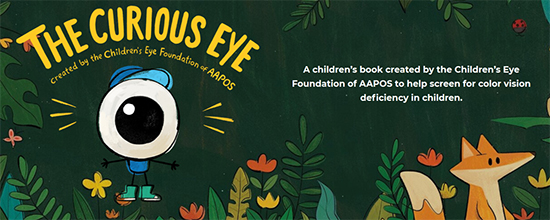 |
Color vision deficiency (CVD), formerly known as color blindness, is the inability to distinguish certain shades of color. The photoreceptor cones of the retina provide color vision in bright light. There are three types of cones, each containing a specific pigment (a photopigment called an opsin) that is most sensitive to particular wavelengths of light, and so colors. The brain combines input from all three types of cones to produce normal color vision. Most instances of CVD are inherited. A gene mutation results in missing or incorrect opsins, affecting color perception. The genes responsible for color vision are located on the X chromosome. Males have only one X chromosome, so one genetic change will cause the condition. In females, who have two X chromosomes, a genetic change would have to occur on both copies of the chromosome to cause the disorder, making it rarer in that gender. However, a father can pass the trait to a daughter through his X chromosome, and she can pass it to her sons. (Guilty as charged!) CVD affects 1 in 12 males and 1 in 200 females worldwide.
There are two types of color deficiency: monochromats, who cannot distinguish any color, which is extremely rare, and dichromats who can distinguish some colors. Within dichromats, there are protanopes and deuteranopes who have red/green deficiency, and trichromats who have blue/yellow deficiency. Both types of dichromats can see some color, but have difficulty distinguishing between them. The consequences of CVD aren’t found only in fashion choices, many early learning materials rely heavily on color perception or color-coding. When CVD hasn’t been identified, a child could be misdiagnosed with a learning disability, and have disadvantages socially and in certain color dependent activities.
Developed more than 100 years ago, the Ishihara test has been the standard for color vision screening. Ishihara uses multicolored dots in the shapes of numbers for color identification. That test may not be useful for very young children. To help identify CVD at earlier ages, The Children’s Eye Foundation of AAPOS (American Association for Pediatric Ophthalmology and Strabismus) developed a children’s book that not only helps screen for CVD, it encourages children to understand that seeing the world differently is “totally OK.” The Curious Eye is an interactive storybook designed for parents and educators that uses pictures to engage children while identifying the need for professional diagnosis. The book is available for free download at www.thecuriouseye.org. Perhaps if I’d had this book all those years ago, I wouldn’t have bought so many crayons!
Learn about visual performance and color discrimination with sports eyewear with our CE, Mapping a Course for Growth with Sports Performance Eyewear, at 2020mag.com/ce. This course is free, supported by an educational grant from Rudy Project.













